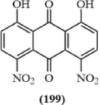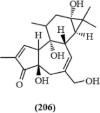The medicinal chemistry of Chikungunya virus
- PMID: 28689975
- PMCID: PMC7126832
- DOI: 10.1016/j.bmc.2017.06.049
The medicinal chemistry of Chikungunya virus
Abstract
Arthropod-borne viruses (arboviruses) are an important threat to human and animal health globally. Among these, zoonotic diseases account for billions of cases of human illness and millions of deaths every year, representing an increasing public health problem. Chikungunya virus belongs to the genus Alphavirus of the family Togariridae, and is transmitted mainly by the bite of female mosquitoes of the Aedes aegypti and/or A. albopictus species. The focus of this review will be on the medicinal chemistry of Chikungunya virus, including synthetic and natural products, as well as rationally designed compounds.
Keywords: Chikungunya; In silico; Medicinal chemistry; Natural products; Synthesis.
Copyright © 2017 Elsevier Ltd. All rights reserved.
Figures













































Similar articles
-
Potential Antivirals: Natural Products Targeting Replication Enzymes of Dengue and Chikungunya Viruses.Molecules. 2017 Mar 22;22(3):505. doi: 10.3390/molecules22030505. Molecules. 2017. PMID: 28327521 Free PMC article. Review.
-
Antivirals against Chikungunya Virus: Is the Solution in Nature?Viruses. 2020 Feb 29;12(3):272. doi: 10.3390/v12030272. Viruses. 2020. PMID: 32121393 Free PMC article. Review.
-
Structure-activity relationship study of arbidol derivatives as inhibitors of chikungunya virus replication.Bioorg Med Chem. 2014 Nov 1;22(21):6014-25. doi: 10.1016/j.bmc.2014.09.013. Epub 2014 Sep 16. Bioorg Med Chem. 2014. PMID: 25282648
-
Compounds from Natural Products Candidates to Drug for Chikungunya Virus Infection: A Systematic Review.Curr Drug Targets. 2024;25(9):635-648. doi: 10.2174/0113894501304256240524052446. Curr Drug Targets. 2024. PMID: 38847165
-
Differential Transmission of Antiviral Drug-Resistant Chikungunya Viruses by Aedes Mosquitoes.mSphere. 2018 Aug 22;3(4):e00230-18. doi: 10.1128/mSphere.00230-18. mSphere. 2018. PMID: 30135220 Free PMC article.
Cited by
-
Targeting Chikungunya Virus Replication by Benzoannulene Inhibitors.J Med Chem. 2021 Apr 22;64(8):4762-4786. doi: 10.1021/acs.jmedchem.0c02183. Epub 2021 Apr 9. J Med Chem. 2021. PMID: 33835811 Free PMC article.
-
In vitro antiviral activity of piperidine alkaloids from Senna spectabilis flowers on Chikungunya virus infection.Pharmacol Rep. 2022 Aug;74(4):752-758. doi: 10.1007/s43440-022-00381-0. Epub 2022 Jul 27. Pharmacol Rep. 2022. PMID: 35882766
-
Advances in the Development of Non-Structural Protein 1 (NsP1) Inhibitors for the Treatment of Chikungunya Virus Infection.Mini Rev Med Chem. 2024;24(22):1972-1982. doi: 10.2174/0113895575301735240607055839. Mini Rev Med Chem. 2024. PMID: 38910486 Review.
-
Current and Promising Antivirals Against Chikungunya Virus.Front Public Health. 2020 Dec 15;8:618624. doi: 10.3389/fpubh.2020.618624. eCollection 2020. Front Public Health. 2020. PMID: 33384981 Free PMC article. Review.
-
Demystifying therapeutic potential of medicinal plants against chikungunya virus.Indian J Pharmacol. 2021 Sep-Oct;53(5):403-411. doi: 10.4103/ijp.IJP_81_20. Indian J Pharmacol. 2021. PMID: 34854411 Free PMC article. Review.
References
-
- Murugan S., Sathishkumar R. Asian Pac J Trop Med. 2016;9:933. - PubMed
-
- Govindarajan M., Benelli G. J Asian Pac Entomol. 2016;19:377.
-
- Abdelnabi R., Amrun S.N., Ng L.F.P., Leyssen P., Neyts J., Delang L. Antiviral Res. 2017;139:79. - PubMed
-
- Bourjot M., Delang L., Nguyen V.H., et al. J Nat Prod. 2012;75:2183. - PubMed
Publication types
MeSH terms
Substances
LinkOut - more resources
Full Text Sources
Other Literature Sources
Chemical Information
Medical

